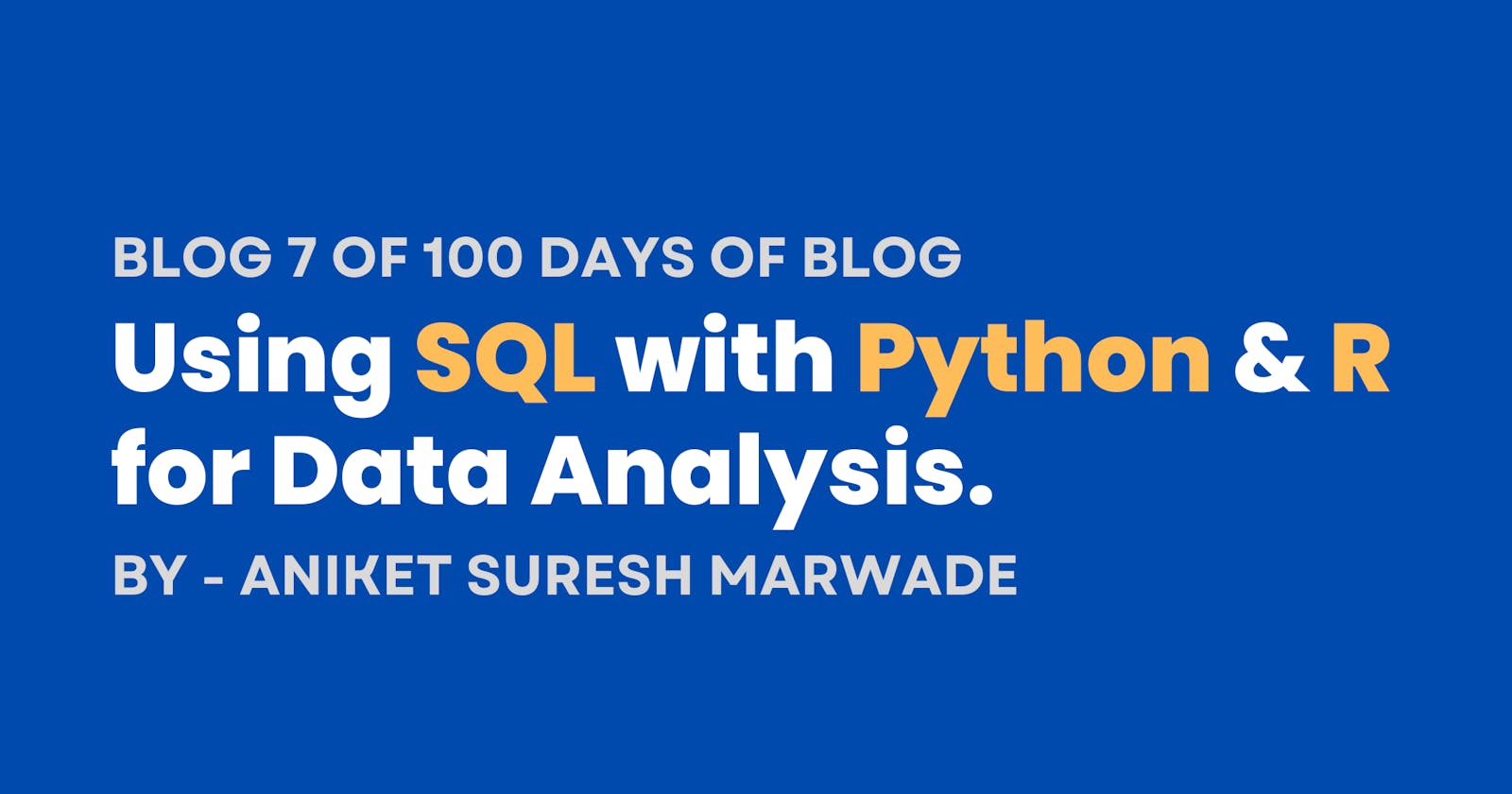Introduction:
In the world of data analysis, combining the power of SQL with programming languages like Python, R, or others can be a game-changer. SQL excels at managing relational databases, while programming languages provide robust libraries for data manipulation, visualization, and statistical analysis. In this blog, we'll explore how to leverage SQL in conjunction with Python and R to perform data analysis efficiently. We'll cover connecting to databases, executing SQL queries, fetching results, and performing data analysis tasks.
Prerequisites: For this tutorial, you should have basic knowledge of SQL, Python, and/or R. Ensure that you have installed the necessary libraries for database connections and data analysis in your Python or R environment.
- Connecting to the Database: The first step is to establish a connection to the database using the appropriate library. For Python, we'll use the "pyodbc" library, and for R, we'll use the "RMySQL" library.
# Python
import pyodbc
# Replace the connection details with your own
connection_string = "Driver={SQL Server};Server=myserver;Database=mydatabase;UID=myusername;PWD=mypassword"
conn = pyodbc.connect(connection_string)
# R
install.packages("RMySQL")
library(RMySQL)
# Replace the connection details with your own
con <- dbConnect(RMySQL::MySQL(), dbname = "mydatabase", user = "myusername", password = "mypassword", host = "myserver")
- Executing SQL Queries: Next, let's execute SQL queries using the established connection. We'll perform a simple SELECT query.
# Python
cursor = conn.cursor()
query = "SELECT * FROM my_table;"
cursor.execute(query)
results = cursor.fetchall()
# R
query <- "SELECT * FROM my_table"
results <- dbGetQuery(con, query)
- Data Analysis with Python and R: Now that we have the data from the database, we can perform data analysis tasks using Python and R.
# Python
import pandas as pd
# Assuming 'results' is a list of tuples fetched from the database
df = pd.DataFrame(results, columns=["Column1", "Column2", ...])
# Perform data analysis tasks using pandas, numpy, matplotlib, seaborn, etc.
# R
# Assuming 'results' is a data frame fetched from the database
# Perform data analysis tasks using dplyr, ggplot2, etc.
- Parameterized Queries: Parameterized queries are essential for security and code maintainability. Let's demonstrate how to use parameterized queries in both Python and R.
# Python
param = "some_value"
query = "SELECT * FROM my_table WHERE column_name = ?;"
cursor.execute(query, param)
results = cursor.fetchall()
# R
param <- "some_value"
query <- sprintf("SELECT * FROM my_table WHERE column_name = '%s'", param)
results <- dbGetQuery(con, query)

